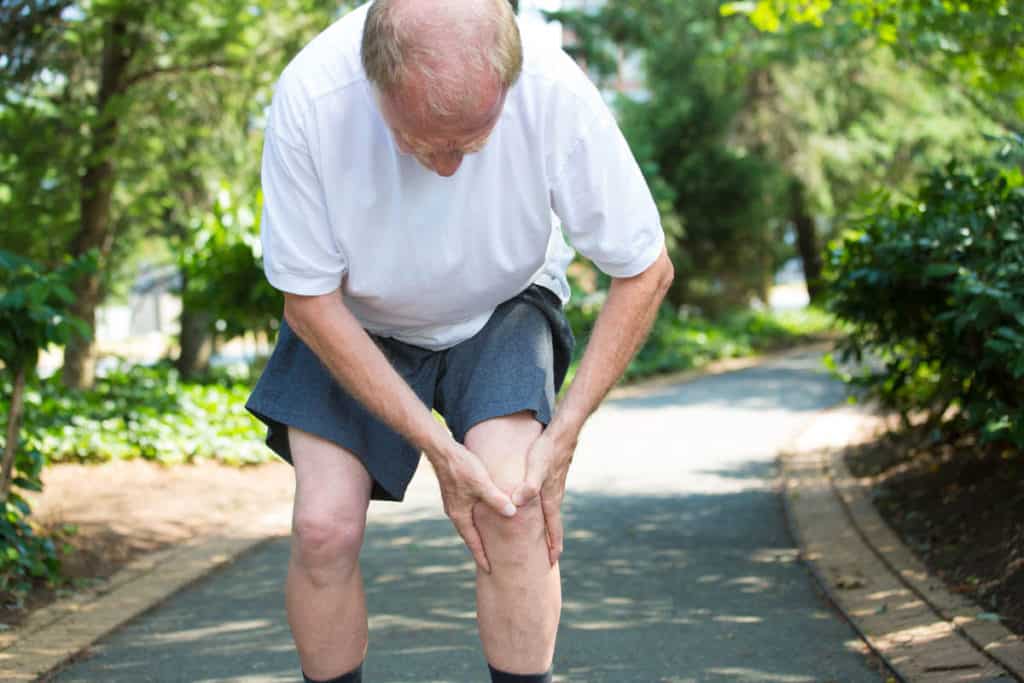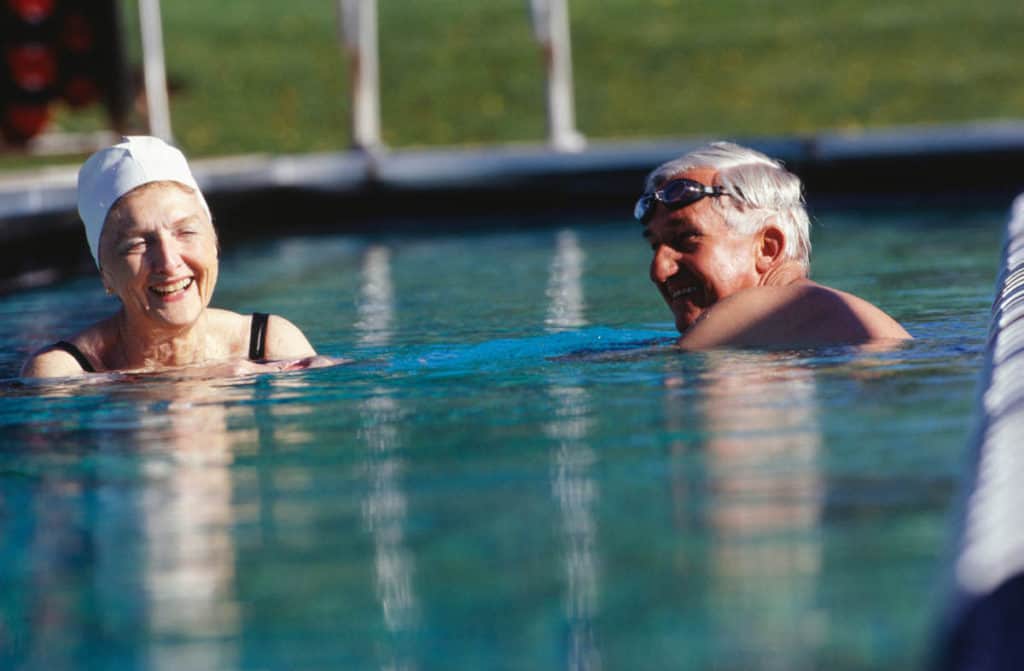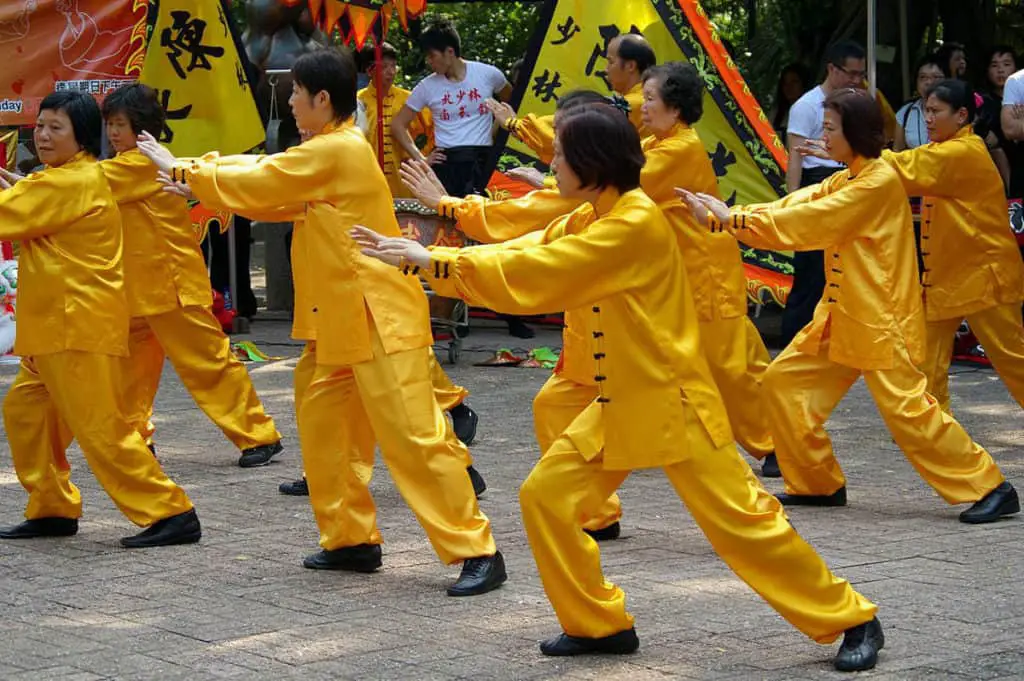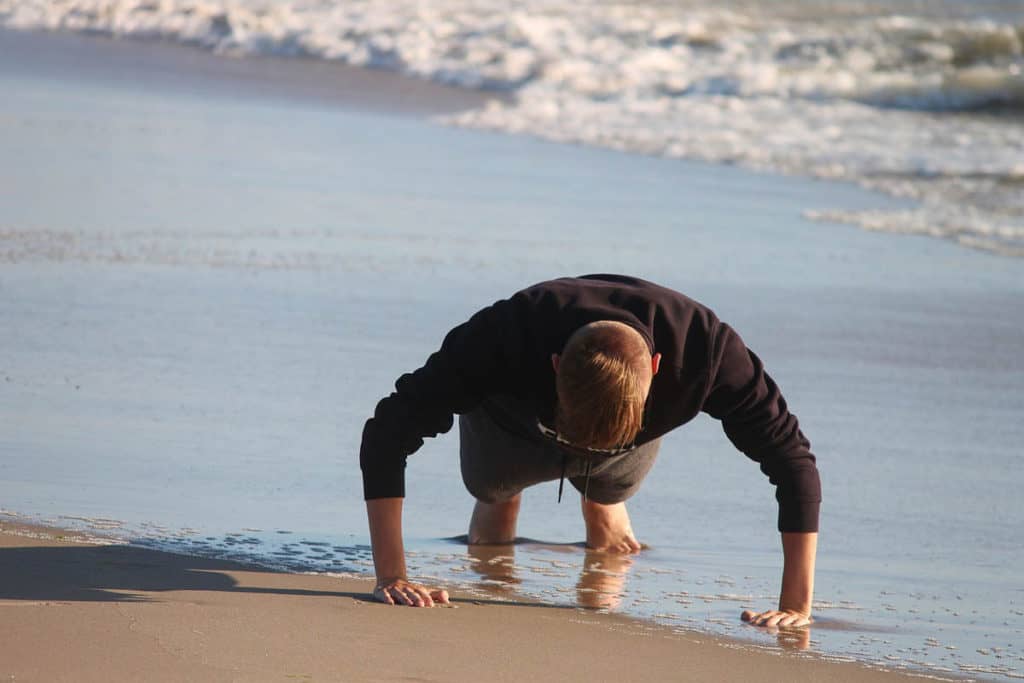Arthritis is a debilitating disorder that severely affects the joints. The patients that suffer from the condition exhibit symptoms like swelling, redness, pain, and stiffness because it attacks the bone and tissue surrounding the joint. Arthritis makes it difficult to move. It limits the range of motion in limbs and makes even slight movements excruciating.
Although there are over a hundred types of Arthritis, the two most commonly reported forms of the condition are Rheumatoid Arthritis and osteoarthritis. Osteoarthritis usually affects older adults. It occurs in the fingers, hips, knees, and other joints. Rheumatoid Arthritis is an autoimmune disease that affects the general population, not just the older demographic.
The disease has no immediate cure. You can only manage it. Contrary to popular belief, the condition is not exclusively brought on by aging. Anyone can have Arthritis regardless of how young or old you are.
One of the causes of Arthritis is weight gain. Overweight individuals are at a higher risk of getting the disease because the excess body weight puts a strain on the joints, causing the ligaments to wear out early on.
Doctors often prescribe paracetamol and ibuprofen to help manage the symptoms of the disease. Heat treatment, ice packs are two homemade remedies for joint pain, and plenty of rest is necessary as well.
One other form of arthritis treatment is exercise. Exercise is incredibly useful for restoring range of motion and reducing pain and swelling. It may seem counterintuitive to move an arthritic joint, but science says that it can be extremely beneficial. There are many exercises for seniors with Arthritis that are recommended to improve their mobility.
You must understand the exercises that are good for you, and how to stay physically active without causing more pain and discomfort.

4 Tips For Exercising With Arthritis
1. Take it Slow
It can be challenging to start exercising if you have arthritic joints. That’s okay. Don’t expect to get a lot done during your first or second attempt. The important thing is to be patient enough so that you don’t aggravate the condition, causing more pain and stiffness.
Start slowly. Exercise for 5 – 10 minutes a day at first. As your joints get used to the movement, you will find it easier to be more active without causing yourself pain.
2. Don’t Push Through The Pain
A common mantra you’ll find in gyms and fitness centers is ‘no pain, no gain.’ Throw that notion out of the window when exercising your arthritic joints.
Exercise should make you feel better, move more comfortably, and reduce swelling. Should you start feeling more pain during the workout, stop immediately. It is not advisable to continue exercising if you think your discomfort is increasing.

3. Take Frequent Breaks
It is easier to get through the exercises if you break them down into small sessions. Work out for 10 minutes intermittently throughout your day. This method is far better and less likely to overwork your joints.
4. Hydrate
Drink lots of water to keep your joints lubricated and your body hydrated. You’re less likely to burn out if you stay hydrated while performing the exercise.
Gentle Exercises For Seniors With Arthritis
You want to ease into the exercise to keep the strain on your joints at a minimum. With time, these exercises become more manageable, and you start to feel less stiffness in your bones. You’re not under any obligation to work your joints at the expense of your comfort, so start with these simple exercises.
1. Close Your Fist
How it helps
This exercise keeps your fingers flexible and eliminates stiff and painful knuckles. It doesn’t necessarily require any equipment, but you can use a rubber ball when it becomes too easy.
How it’s done
Slowly ball your hand up into a fist then hold it in that position for at least five seconds. Then, slowly unclench it and relax it completely. Repeat the exercise as many times as you can.
It’s alright to do it slowly at first. Once you’re comfortable, you can gradually increase the pace of your fist close exercises.
2. Bend Your Wrist
How it helps
This exercise helps with stiff wrists. As you’re probably aware, Arthritis can cause pain and joint dysfunction in the wrists. Staying flexible can prevent chronic pain and increase hand mobility.
How it’s done
Place your forearm on a flat tabletop with your elbow bent and your palm facing up. Bend your hand at the wrist and point to the ceiling with the tips of your fingers.
Gently push against your open palm using your other hand. Don’t do it forcefully enough to feel pain, but push your palm back as far as you comfortably can.
Hold the position for at least five seconds, then release.
Return to the starting position and push your hand forward. Hold for five seconds as well, then let it go.
Repeat the exercise as many times as you can.
3. Curl Your Hand Into an “O” Shape
How it helps
Although this exercise is more laborious if you have advanced Arthritis, it is useful for restoring joint mobility in the knuckles. It has a higher potential for pain, so be careful when trying out this exercise.
How it’s done
Cup your hand like you’re holding an invisible glass of water. Although it might be difficult, try to bend your fingers and thumb to form an “O” shape. You may not be able to do it right away if you have severe Arthritis. However, with time, the exercise will hurt less.
The “O” shape hand curl is often followed up by the fist close. Once you regain mobility in your hand, it is easier to build up strength.
4. Stretch While Seated
How it helps
This exercise works your hips, knees, and leg muscles. All you need is a mat or a comfortable place to sit on the floor.
How it’s done
Sit upright on the floor and extend your legs in front of you. Bend forward slowly as if you’re reaching to touch your toes. Go as far as you can and hold the position for a while, if possible.
It is perfectly fine if you don’t reach very far on your first try. This exercise has a gradual effect on the flexibility and mobility of your waist, hips, and knees. It also exercises your leg muscles.
5. Step on a Stair
How it helps
A step-up is an exercise where you put one foot on a stair and back. This exercise focuses on the knee, which is one of the hardest-hit joints by Arthritis. It reduces pain and stiffness, making it easier to walk without support.
How it’s done
You will need to find a staircase, a doorstep, or an elevated section of the house for this activity. If you feel unbalanced, grab onto something (the railing, the wall, etc.) before you start.
Start with your favorite leg (or most troublesome knee) and climb the bottom step, then switch and repeat with the other leg. Move slightly backward when switching to your other leg.
Repeat the exercise a few times, and adapt a slow but steady pace.
6. Twist Your Ankle in a Circle
How it helps
This exercise alleviates stiffness and pain in the ankle joints. You need to be adequately balanced while performing this exercise to avoid injuring yourself.
How it’s done
Stand upright with feet shoulder-width apart. Lift one leg and point downwards with your big toe. Move the tip of your toe as if you’re sketching a circle on the floor. Be careful and gentle, and don’t put any pressure on it if it’s painful.
Draw at least five circles with one foot, switch and repeat with the other foot. Alternatively, you can circle the same foot in the opposite direction.
7. Chair Stand
How it helps
The chair stand is a good exercise for building muscle and strengthening the knee and ankle. It helps improve leg mobility and reduces pain and stiffness in arthritic knees.
You can do it with any sort of chair, but ideally, you need a chair with armrests for support.
How it’s done
Sit in a chair of average height. Once you’re ready to begin, stand up like you usually do, then sit down again using slow, controlled motion.
At first, you may need to control that motion using your arms. As your legs get stronger, you’ll start relying less on your arm muscles and more on your legs.
Exercise gradually improves knee joint mobility and strength. If it starts getting too comfortable, use a chair of lower height.
8. Swimming
How it helps
Swimming is an excellent activity to target multiple arthritic joints at the same time. By making your limbs buoyant, it takes off the strain of moving from your muscles and joints so you can walk less painfully.
Swimming is useful when dealing with stiff joints that are too painful to move without support. Besides, there are a variety of water sports geared toward improving joint mobility and strength.

How it’s done
For people who can’t swim, either due to pain or inexperience, getting in a pool can still be beneficial. There are plenty of aquatic exercises designed to help older adults with Arthritis keep fit and prevent pain and swelling in multiple joints at once.
Some of them include walking in deep water, swimming laps, and hot water therapy using a hot tub. If you’re doing this in your backyard, you can try to simply make it across your pool (from the deep end to the shallow end.
At a fitness center, you can get access to underwater treadmills and personal trainers to tailor specific exercises for you. You can also use a water jogging belt, which suspends you a few inches above the pool floor, making it easier to move.
Activities That Can Reduce Arthritic Discomfort
Apart from the simple exercises we’ve looked at above, there are a few other activities that can help soothe arthritic joints. These activities have a significant impact on the joints and limbs. They keep you flexible, reduce swelling in your joints, and help you manage your arthritis problems in a way that’s relatively pain-free and easy to execute.
More importantly, these activities are fun. They include the following.
1. Yoga
Yoga is an ancient form of exercise that’s practiced widely. The word yoga means ‘to yoke’ or ‘unite.’ Practicing yoga benefits your movement and breath control. One of its benefits is that it can reduce tension in the joints and muscles, and thereby it is ideal for stopping arthritic joints from swelling up and becoming painful.
Another benefit that yoga holds for people with Arthritis is that it improves the health of the immune system. Gentle stretching exercises can work wonders as far as keeping your joints flexible is concerned.
That said, not all yoga exercises are suitable for older adults with Arthritis. Power yoga, for instance, has a reputation for causing an internal buildup in temperature as well as accumulating pressure around the joints. Another yoga exercise called the four-limbed staff pose (chaturanga dandasana) is notoriously hard on the shoulder joints. Don’t try it if you experience pain or discomfort in your shoulders.
One way to enjoy yoga without exacerbating your condition is by working with an instructor that understands your unique needs. As useful as yoga can be for arthritic management, it’s easy to push yourself too hard if you don’t know where to start.
Related: 12 Reasons Why Chair Yoga is Great for Seniors
Related: Does Chair Yoga Help with Balance?
2. Walking
One of the simplest things you can do to keep your Arthritis from flaring up is taking frequent walks. Walking is healthy, low-impact exercises that keep your muscles and joints flexible. You don’t need to walk for miles either. A short lap around the park or to the grocery store and back can do wonders for your Arthritis, especially if you find a way to incorporate it into your daily routine.
Walking is, by class, a weight-bearing exercise since you place most of your body weight on your bones and joints. It reinforces density and strength.
Furthermore, walking is a cardio-intensive exercise that keeps your heart and lungs functioning optimally.
If you’re unsure of where to start, there are walking programs designed to suit your walking ability and to motivate you to keep walking daily. Plus, you can learn how to use safe techniques to avoid injury or aggravating your condition.
If you’ve only begun to walk, you might be wondering about the right speed and intensity to adapt. You want to be walking hard enough that you’re a little short of breath, but not so much that you can’t hold a quiet conversation.
You can start small and increase your pace and distance over time as you get used to the activity.
Pay great attention to your footwear. Make sure you have comfortable, breathable, and supportive sneakers to avoid creating further problems with your ankles and toe joints.

3. Tai-Chi
As an ancient Chinese art of self-defense, Tai-Chi may seem unorthodox for managing Arthritis. However, the practice, which involves slow, fluid, circular motion and controlled breathing, has a visible impact on muscle strength and density, and joint flexibility. Tai-Chi is also great for balance and increasing your natural range of motion.
Tai-Chi is extremely useful for arthritic management because it is a low-impact activity with a minimal chance of injury. It engages entire muscle groups without straining them or causing further stress to painful and swollen joints.
Furthermore, Tai-Chi can be performed indoors or outdoors, depending on your mood. You can also do it in a group or by yourself, although group sessions have social and mental benefits. The activity can turn into a pastime that keeps you fit, healthy, and free of arthritic discomfort.
Related: Does Tai Chi Help with Balance?
4. Cycling
Doctors recommend that you stay active after your arthritis diagnosis. One way you can do this is by cycling.
Whether stationary or outdoor, cycling, like walking, is a low-impact exercise that engages multiple joints and muscles at once. Your ability to cycle will determine how quickly you get used to it. You can start with an indoor (stationary) bike if you want to get acclimated to the activity before you go outdoors.
Biking is an aerobic exercise. Apart from exercising your hips, knees, ankles, and most of the joints in your feet, it improves cardiovascular health and endurance.
Like many of the activities we’ve talked about, cycling can start as a low-intensity activity that you gradually increase as you get used to it. Start with cycling for 10 minutes a day, then 15, then 30, and slowly improve upon your best record as you get more comfortable on the bike.
Plus, since you can do it indoors and outdoors, cycling can be an activity for all seasons, from winter to summer.
5. Golf
After getting Arthritis, the last thing you should be thinking about is competitive sports. That is unless you’re talking about golf.
Golf is a uniquely beneficial sport for people with Arthritis. As a sport, it is enjoyable, and it gives you a chance to get some sun and fresh air. What most might not know is that it is an exercise that’s very useful in the management of arthritic pain.
Golf is almost like physical therapy for arthritic joints. Not only does it increase your overall strength and mobility, but the specific movement it demands enhances flexibility in the upper and lower extremities as well as in the spine and hips.
Apart from strengthening joints and muscles, golf improves balance, motor coordination, and range of motion, especially in the shoulders, hips, and elbows.
A couple of adjustments are necessary to turn the sport into a therapeutic activity. For one, you may need lighter equipment. You also have to modify your swing to accommodate your condition.
It is essential to warm up before golf. Keeping your joints limber is crucial to avoid injury and further aggravation of your condition. Having Arthritis doesn’t mean you can’t enjoy your favorite pastime and provided you do it safely, you can leverage it to manage your health.
Related: Is Golf Good Exercise for Seniors?

6. Jogging
Running is highly recommended if you have Arthritis. It is one of the few exercises that ease painful joints while training them to be more flexible and mobile.
The most important thing to consider before you start to run is your shoes. Your comfort and endurance all depend on whether your feet have enough support while running. Your running shoes should be breathable, fit well, and support your feet amply so that you don’t struggle with maintaining your balance or running for long distances.
Another thing to think about is the terrain. If you’re jogging as a form of therapy for your arthritic joints, you need to do it on a soft, flat surface.
If you live near a high school or college, consider using their running track whenever you can. Cracks in the sidewalk and uneven terrain may end up forcing you into unsafe maneuvers, which can either aggravate your Arthritis or otherwise cause you to injure yourself.
Remember to stretch before you begin jogging. Doing this will reduce the risk of injury and damage your sick joints.
7. Dancing
Dancing is a leisure activity that’s surprisingly well recommended by physical therapists as a method of keeping joints limber and painless if you have Arthritis.
If you intend to start dancing and you haven’t done it before, the first thing you need is good dancing shoes. Support is crucial for a learner lest you injure your ankle or take a tumble due to a loss of balance.
You may not want to start with fast salsa or other vigorous dance types. Instead, choose a dance routine that’s slow-paced and highly engaging of your joints and limbs.
For instance, you can start with belly dancing. Unbeknownst to many, belly dancing is great for the shoulders and arms. The way you shake and shimmy engages your spine and hips in a manner that’s not too intense but is effective.
Dancing also increases knee flexibility, joint mobility, bone strength, and pain relief in arthritic joints.
8. Going to The Gym
Resistance training can restore physical functioning in 50 – 75 % of people who suffer from osteoarthritis, according to Harvard Medical School. It doesn’t matter how old you are; going to the gym is a highly recommended activity for people with Arthritis.
Both strength and resistance training can be influential in managing arthritis symptoms. These need free weights, and possibly a trainer if you’re not too familiar with the workings of a gym.
There are two types of exercises you can use to strengthen your joints and muscles. The first is isometric, which involves contracting your muscles while keeping the joint stationery. This exercise is extremely beneficial for restoring movement to a stiff and painful joint.
The second type of exercise is isotonic, which involves moving the joints. This exercise fortifies the ligaments and muscles surrounding the joints, improving strength and flexibility as well.
9. Physical Therapy
Another avenue you can pursue if you’re reluctant to join the gym is hiring a personal trainer. Physical therapy is vital when dealing with critical cases of Arthritis.
A personal trainer motivates you to exercise even when you’re not feeling so good about it. Moreover, they teach you how to do the exercise, and we all know how important it is that you adopt the right form when working out.
Some of the techniques you can learn from a trainer include those that enhance endurance, range of motion, and flexibility.
Besides, seeking professional help is the best way to deal with symptoms of arthritis head-on. Most of the exercises may be tailored for your specific condition, making them much more effective in the long run.
When choosing a trainer, it is essential to go for one that has experience dealing with arthritic patients.
10. Pilates
If you want to build muscle strength, then Pilates is an excellent exercise. Here’s why.
Pilates strengthens the muscles supporting your joints, and that helps to stabilize them. Building stronger muscles protect your joints by taking away strain and pressure.
One activity that might help is the shoulder bridge. Lie on your back with your knees bent, and your glutes lifted off of the floor. Place your arms on either side of your body, and hold the position while you exhale slowly through your lips.
Your abs should be tight, and your pelvis should remain lifted off the ground. However, your back should stay straight, not arched. Hold the position for a few inhales, then lower yourself gently back to the floor, rest, and repeat.
Remember to be S.M.A.R.T
Exercise is helpful when dealing with Arthritis, but you have to remember to be S.M.A.R.T about it.
S – Start slow
M – Modify to accommodate your pain and discomfort
A – Actions that are gentle on the joints are a lot more effective
R – Realize the safest ways to exercise
T – Talk to a professional to learn about new ways to exercise
Conclusion
As you can see the worst thing you can do if you have arthritis is to stay still. You want to keep on exercising and moving but not to the point where it hurts.
Before trying any of the exercises for seniors with arthritis or in fact anyone with the condition it’s recommended to consult your doctor.




